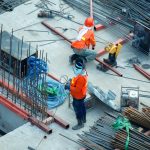
In many instances, contractors put in all the work and comply with the terms of the agreement; however, they receive less or no payment. In the event that the contractor has performed in terms of the contract, but refused payment, there are legal grounds available to the contractors to pursue legal action and recover payment owed to them.
The adverse effects of non-payment by employers are a common cause in the construction industry. Building contracts are species of the locatio conductio operis (letting and hiring of work). Locatio conductio operis is a mutual agreement between one party (the employer) and the other (the contractor) where the contractor undertakes to make his services available with regards to a physical material matter to an employer for payment. Non-payment in construction contracts can take several forms, namely: late payment, reduced payment, or no payment at all.
The are several remedies available for contractors to enforce payment.
The general principles of South African law apply to building and construction contracts. In general, the following principles apply to where contractor claims work done in terms of location conduction operis. The contractor needs to allege and prove the following:
The terms of the contract of which he relied upon; the work that he had performed; the remuneration applicable and whether it is payable. The contractor must also allege and prove that he has done all that was required to be done in terms of the contract.
The mere completion of a specific subdivision of the work does not entitle the contractor to payment of work completed unless the parties had agreed to the interim payments. Only upon completion of an entire job, they will be entitled to payment. The remedies to enforce payment include the following
RIGHT TO INTEREST ON LATE PAYMENT
If the employer fails to pay the funds due to the contractor, the contractor may charge interest on the amount due. The easiest way to recover such interest would be when the contract has an express provision that provides for interest payment in specific circumstances at a qualified rate.
RIGHT TO TERMINATE
In a case where the contractor has performed but work has not been fully completed, the contractor’s claim for an interim payment of the partially completed work could be met with a counterclaim from the employer based on exeptio non adimpleti contractus (right to withhold payment). Where the agreement provides for the interim payment, and the employer fails or refuses to pay, the contractor may elect to suspend or terminate the contract consequent to breach of contract.
CONTRACTORS LIEN
A right of retention entitles the holder of that right to retain possession of the property until expenditure of money incurred by him in respect of that property is reimbursed to him. Often the employer in a construction context will require that the contractor waives its lien.
SUMMARY JUDGEMENT
Rule 14 of Magistrate’s Court Rule and Rule 32 of Uniform Rule provides for this procedure, enabling a plaintiff with a clear case to obtain the swift enforcement of his claim against a defendant who has no real defence to that claim. However, courts have stressed that summary judgment’s remedy is extraordinary and stringent as it makes inroads into a defendant’s right to have his case heard. Courts are therefore reluctant to grant this remedy.
ARBITRATION
Commonly, parties make provisions in a contract that should any dispute arise in terms of the contract; it must be referred to arbitration and declare that the arbitration award is final and binding to the parties. Once an arbitration award has been made, it can be enforced in the same way as any judgments or orders to the same effect.
Conclusion:
In light of those above, one needs to have a well-drafted contract setting out parties responsibilities, performance deadlines and providing for the disputes between the parties.
REFERENCE
- Maritz M J, Robertson DC, 2012. What are the legal remedies available to contractors and consultants to enforce payment? Journal of the South African Institution of Civil Engineering, Vol 54. Available at http://www.scielo.org.za/pdf/jsaice/v54n2/03.pdf
This article is a general information sheet and should not be used or relied on as legal or other professional advice. No liability can be accepted for any errors or omissions nor for any loss or damage arising from reliance upon any information herein. Always contact your legal adviser for specific and detailed advice. Errors and omissions excepted (E&OE)
